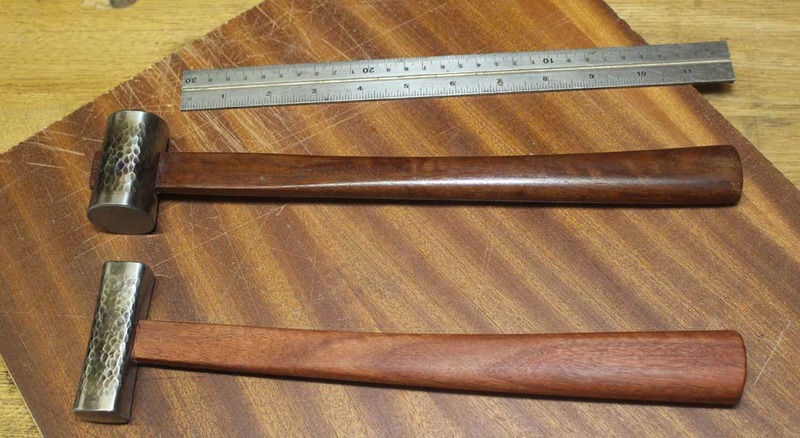Benchwayze
Established Member
I have always been a little mystified over Japanese chisels.
So I wonder if the Eastern tool enthusiasts on the forum could help.
First off; what does Oire nomi mean?
Do Japanese chisels have special designs for specific jobs; i.e morticing, dovetailing and paring.
Using a hammer with chisels.
I know Japanese workers use a hammer, and I understand why there is a hoop on their chisel handles.
It isn't in me to use a hammer with a woodwork chisel; not even the plastic handled versions, so
If one were to use a mallet with a Japanese chisel, it wouldn't be long before the mallet was chewed up by the hoop. Removing the hoop would avoid this, but would the handle then suffer?
I like the idea of the hollow grind in the back of the chisels. Far less bother keeping the chisel face flat, where it matters. (The main reason I flatten only about 3/8" of the face of my plane irons. Easier to ensure flatness where it counts, and no need to turn my iron into a knife with the ruler trick. No offence meant David C.)
Am I considering buying some Japanese chisels? If they are superior for dovetailing I might. Even at this late stage. ( At least my son will reap the benefits when he has to have a 'garage sale!)
Incidentally, please, please, don't take me to task over the ruler trick! There will be just one reply if anyone does; and it won't be rude!
Thanks in anticipation...
Regards
John (hammer)
So I wonder if the Eastern tool enthusiasts on the forum could help.
First off; what does Oire nomi mean?
Do Japanese chisels have special designs for specific jobs; i.e morticing, dovetailing and paring.
Using a hammer with chisels.
I know Japanese workers use a hammer, and I understand why there is a hoop on their chisel handles.
It isn't in me to use a hammer with a woodwork chisel; not even the plastic handled versions, so
If one were to use a mallet with a Japanese chisel, it wouldn't be long before the mallet was chewed up by the hoop. Removing the hoop would avoid this, but would the handle then suffer?
I like the idea of the hollow grind in the back of the chisels. Far less bother keeping the chisel face flat, where it matters. (The main reason I flatten only about 3/8" of the face of my plane irons. Easier to ensure flatness where it counts, and no need to turn my iron into a knife with the ruler trick. No offence meant David C.)
Am I considering buying some Japanese chisels? If they are superior for dovetailing I might. Even at this late stage. ( At least my son will reap the benefits when he has to have a 'garage sale!)
Incidentally, please, please, don't take me to task over the ruler trick! There will be just one reply if anyone does; and it won't be rude!
Thanks in anticipation...
Regards
John (hammer)



































